Best hikes in Yellowstone National Park: waterfalls, wildlife and geysers galore
The best hikes in Yellowstone National Park take you on a tour of remarkable hydrothermal and geologic wonders, wildlife viewing and waterfall gazing

Yellowstone is widely considered to be the world’s first National Park and its famous geysers are rumored to have inspired the very idea of preserving areas natural beauty for the enjoyment of future generations. What makes Yellowstone National Park so special? Primarily it’s the unique hydrothermal and geologic wonders of the park in addition to many abundant opportunities to view wildlife like bison, bears and wolves, and the best hikes in Yellowstone National Park let you explore all of this.
Set on 2.2 million acres of land mostly in Wyoming, and partially in Montana and Idaho, Yellowstone is vast (bigger than Rhode Island and Delaware combined), rugged and remote. The best known feature is Old Faithful, one of the Park’s 500 or so geysers (erupting hot springs) but it’s also home to more than 10,000 other hydrothermal features, 290 waterfalls and the largest high elevation lake in North America. You’ll definitely want wheels to explore all of this, but of course, the best parts are off the beaten path so we highly recommend packing your hiking boots and exploring on foot.

Lucky for you, there are some 1,000 miles of spectacular hiking trails in Yellowstone National Park. If you’re planning a visit, know that Yellowstone is open year-round but is subject to unpredictable weather and wild temperature swings. The best times to visit are spring and fall, which are slightly off peak without being subject to severe winter weather. Before entering the park, you will want to read our safety guides on what to do if you meet a bear or a wolf on the trail.
Here, we’ve selected some of our favorite day hikes in the Park that take you to geysers, waterfalls and deep canyons.
Upper Geyser Basin and Old Faithful Observation Point Loop

Distance: 4.9 miles
Difficulty: Moderate
Naturally, you’re going to Yellowstone with geysers on your mind so this hike should be top of your list. This trail is relatively flat and takes you by dozens of geysers.
Start at Old Faithful and wait for it to erupt – it does so every 44 minutes – then go around it to the right. At the first junction, turn right towards the murmuring Firehole River. Cross the bridge and continue along the trail, detouring to take in Observation Point and Solitary Geyser. Then follow the trail passing geysers every few minutes until you meet the paved trail which takes you back to the visitors center.
All the latest inspiration, tips and guides to help you plan your next Advnture!
Avalanche Peak
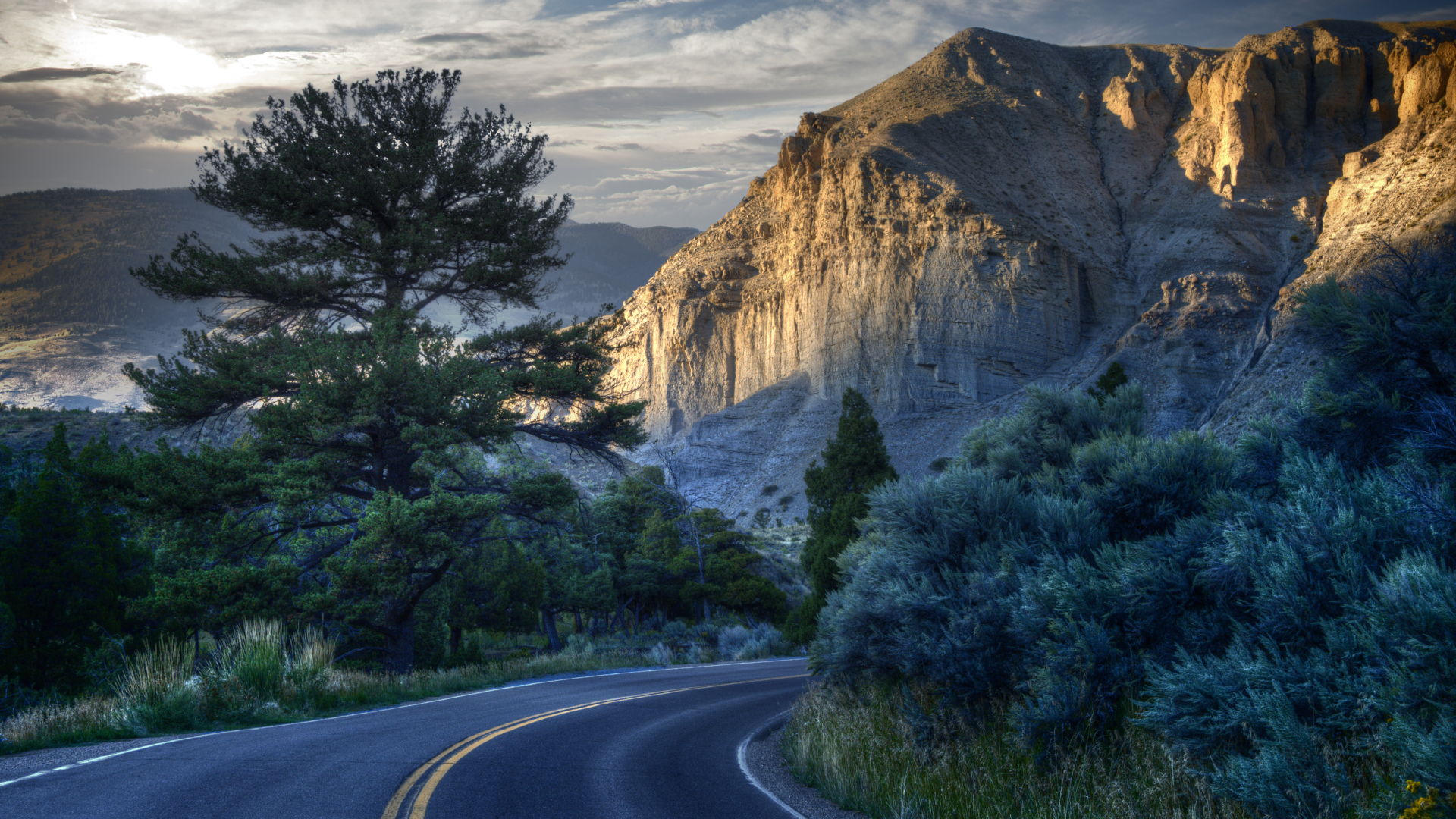
Distance: 4.5 miles
Difficulty: Challenging
Avalanche Peak is easily one of the most popular hikes in Yellowstone, with beautiful scenery the entire way. This trail over in the east side of the Park is steep from start to finish, taking you from dense forest all the way to a rocky ridge at the summit of Avalanche Peak which stands at 10,568ft above sea level.
Start from the East Entrance Rd and after a mile in the forest, you’ll emerge into the stunning basin of Avalanche Peak. Expect lots of switchbacks and a little scree before reaching the summit, where you’ll want to take advantage of the wind shelters as you enjoy views of Silvertip, Hoyt, Grizzly and Top Notch Peaks.
South Rim to Point Sublime
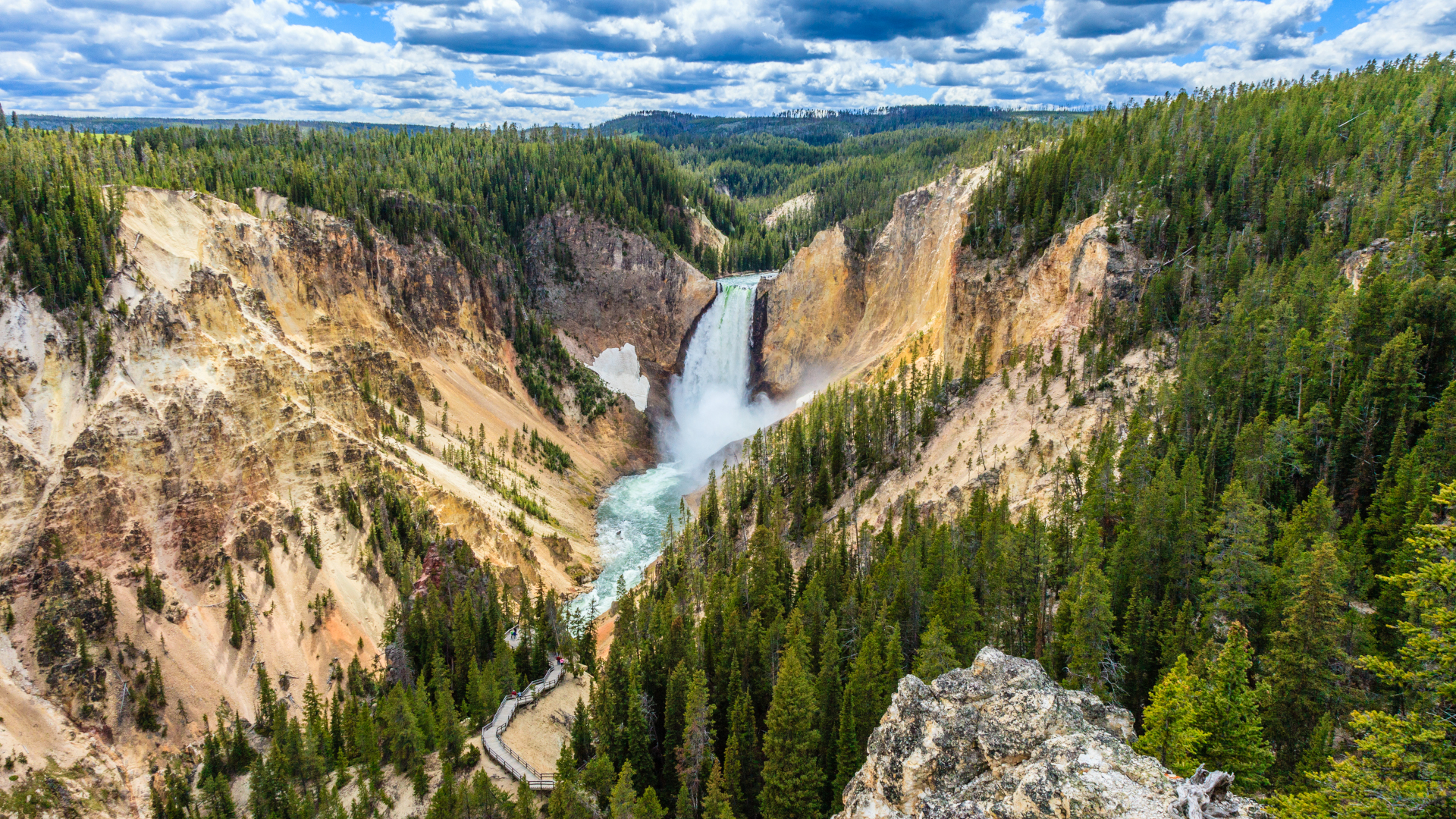
Distance: 6.4 miles
Difficulty: Easy
The Grand Canyon of the Yellowstone is a 24 mile long, 1200ft deep canyon on the Yellowstone River and our favorite way to view it is from the South Rim.
This flat trail near the center of the Park takes you from the Wapiti Lake trailhead along the rim, passing Yellowstone Falls on the way to Point Sublime with terrific canyon views the entire way. Stopping off at Artists’ Point on the way is highly recommended. Stay away from the edge of the rim as the cliffs here are crumbling.
Seven Mile Hole
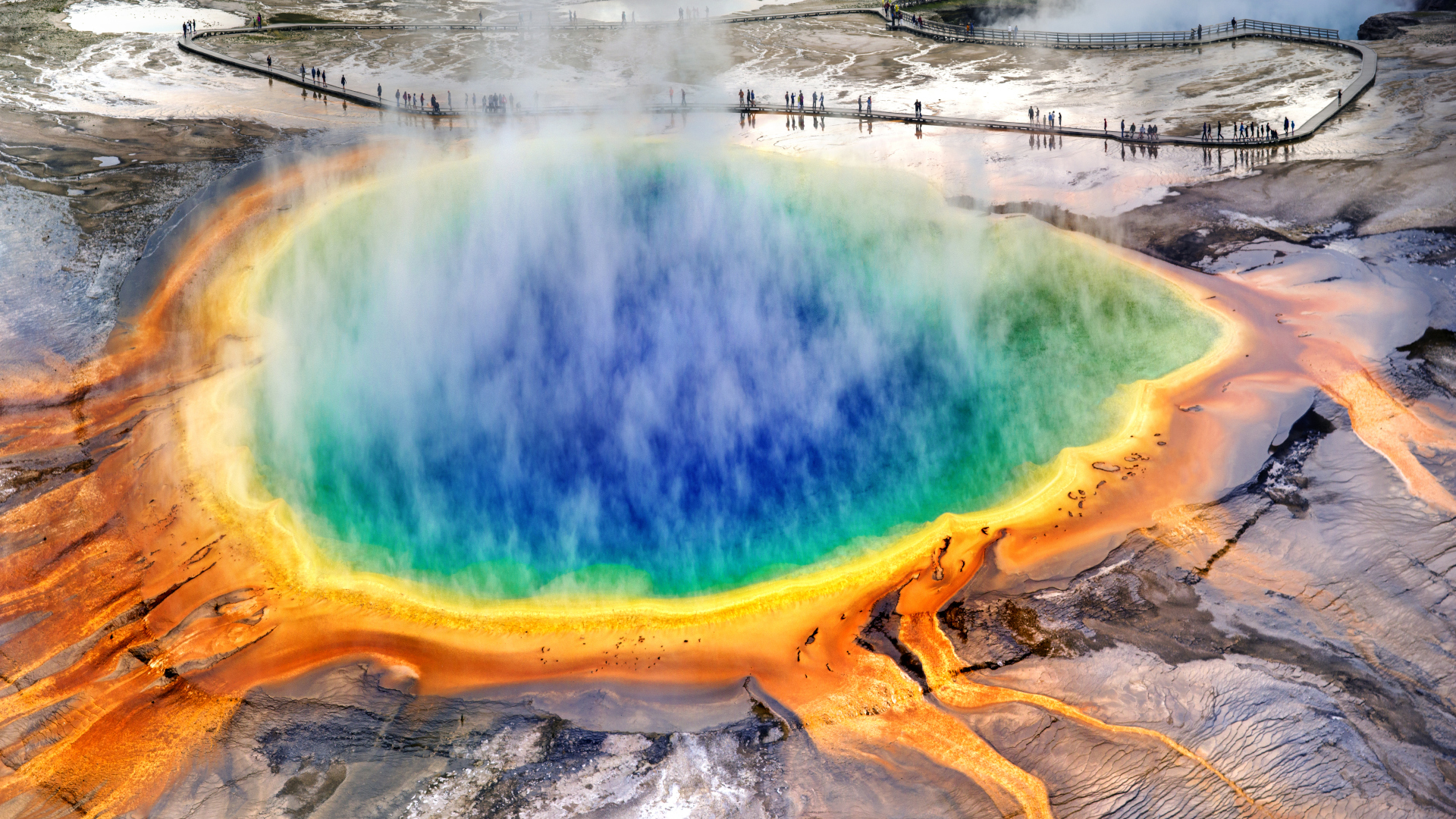
Distance: 9.7 miles
Difficulty: Challenging
If you only had time for one hike, this one might be the best one, as it takes in many of the Park’s highlights, from the Grand Canyon of the Yellowstone to hot springs and wildlife.
Start at the Glacial Boulder pullout, on the road to Inspiration Point. Up in the Canyon area and hike near the rim to hook up with the Washburn Spur Trail then the Seven Mile Hole Trail where you’ll drop down more than 1,000ft in just over two miles to the bottom of the canyon followed by a challenging climb back up.
Fairy Falls
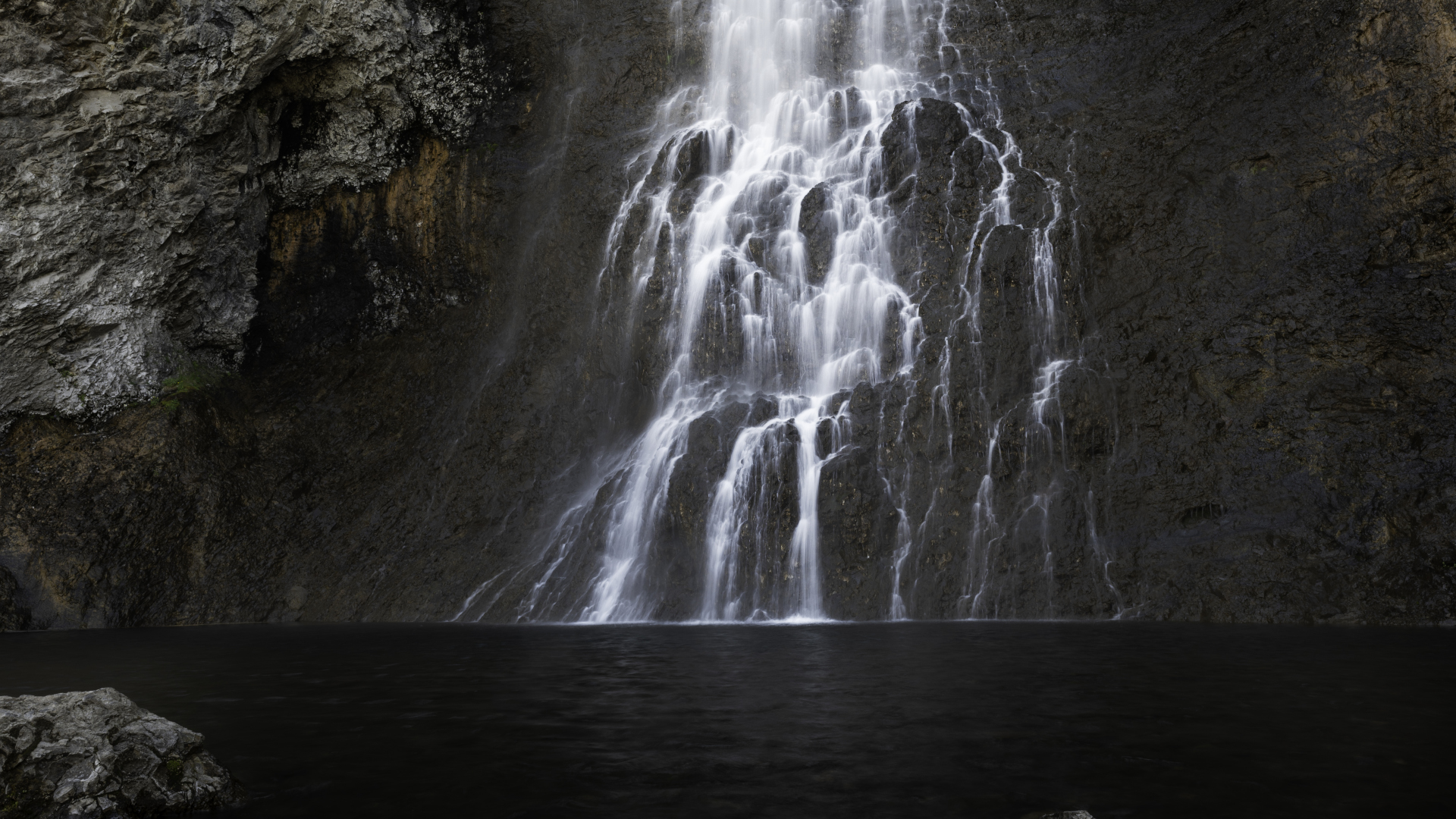
Distance: 4.8 miles
Difficulty: Easy
This is a relatively easy hike in the Old Faithful area of the Park to a spectacular waterfall and two geysers.
Start from the Fairy Falls Trail parking lot and hike through the forest, passing the unbelievable circular blue Grand Prismatic geyser and the erupting Spray and Imperial geyser before reaching the falls, which at 200ft high are absolutely magical.
Sky Rim Loop
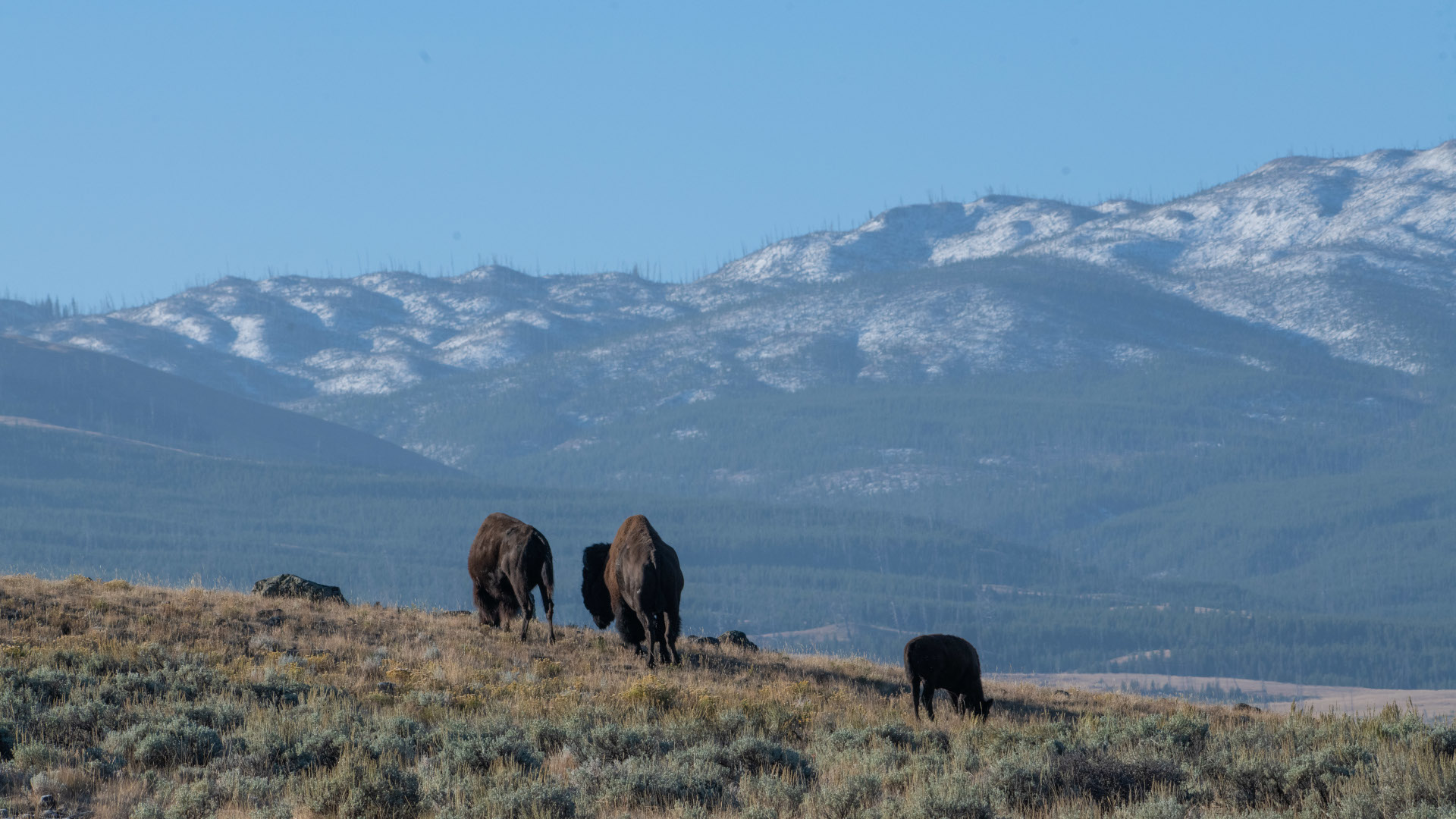
Distance: 18 miles
Difficulty: Difficult
Located in the Montana portion of the Park, this loop offers classic, breathtaking views in exchange for a pretty full-on day hike, or overnight backpacking trip, however needless to say you don’t have to do the full loop.
Start from the trailhead on 191 and hike through the meadow towards the rim following signs for the Sky Rim Trail. At the junction, you can go in either direction and expect vast, dramatic mountains as you tour the edge of the Park and summit Big Horn Peak on the way.
Brink of the Lower Falls

Distance: 0.7 miles
Difficulty: Moderate
This hike up in the northwest corner of the Park is a short but steep climb down to view the beautiful Lower Yellowstone Falls.
Start from the trailhead on North Rim Drive and switchback straight down to the Falls, which tumble down over 300ft, and enjoy views of the Grand Canyon of the Yellowstone. Then it’s a short but steep hike back up.
Beaver Ponds Loop
Distance: 6 miles
Difficulty: Moderate
Up in the northern part of the Park near Mammoth Hot Springs, this family friendly, scenic hike is great for wildlife viewing and escaping the crowds.
Start from the trailhead north of Liberty Cap and travel in either direction. After a bit of a climb, the trail levels out and you can enjoy a long loop, skirting the edge of the ponds about halfway along, and look out for every kind of wildlife from beavers and moose to elk and bears.
Julia Clarke is a staff writer for Advnture.com and the author of the book Restorative Yoga for Beginners. She loves to explore mountains on foot, bike, skis and belay and then recover on the the yoga mat. Julia graduated with a degree in journalism in 2004 and spent eight years working as a radio presenter in Kansas City, Vermont, Boston and New York City before discovering the joys of the Rocky Mountains. She then detoured west to Colorado and enjoyed 11 years teaching yoga in Vail before returning to her hometown of Glasgow, Scotland in 2020 to focus on family and writing.

